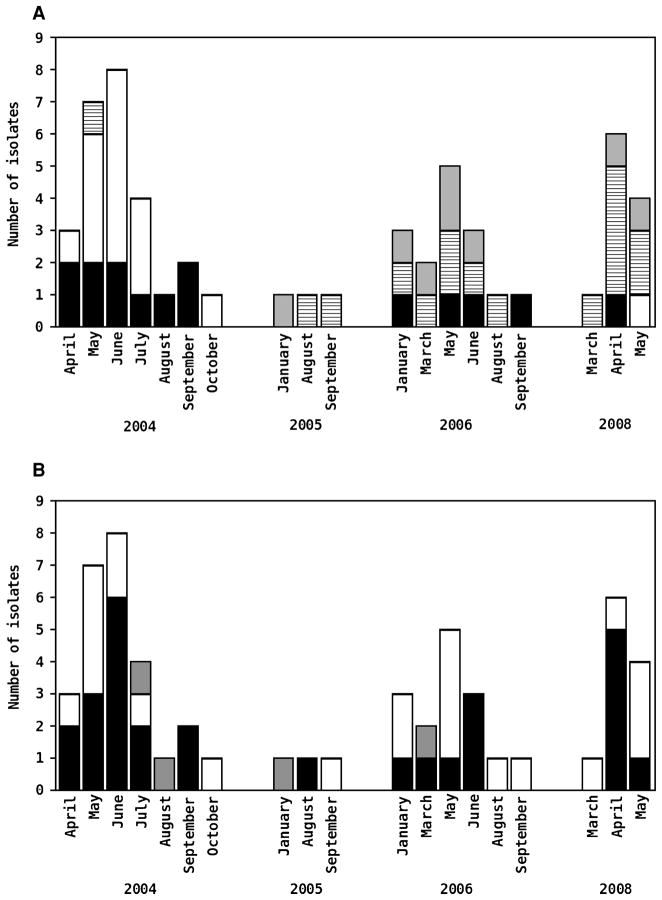Fig. 4.
Monthly distribution of Plasmodium falciparum variants characterized in 55 isolates collected in Acre, Brazil, between April 2004 and May 2008. In the upper panel (A), isolates are grouped according to the populations in which they have predominant ancestry. They are considered as members of 1 of the 3 populations (black, white or hatched shading) if they had a membership fraction of 70% or greater in this population. When no predominant ancestry could be defined, the isolates were considered to have a ‘mixed ancestry’ and were represented with grey shading. In the lower panel (B), isolates are grouped according to the dimorphic type (either FC27 or 3D7) characterized at their MSP-2 locus. Black shading indicates FC27-type parasites, no shading (white boxes) represents 3D7-type parasites and grey shading represents mixed-clone infections with both FC27-type and 3D7-type parasites. The figure shows the number of isolates belonging to each variant according to their dates of collection.

